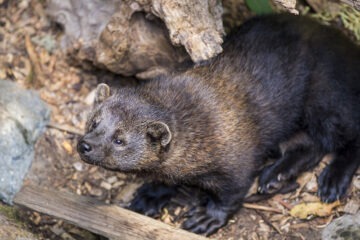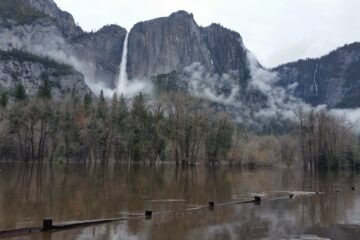You’ve heard the word heritage … but have you ever heard of geoheritage? The 2016 Earth Science Week, an annual October occasion, celebrated our shared geologic heritage — the global collection of natural wonders, landscapes and resources that we have “inherited” from the past, are working to manage and preserve in the present, and will pass on to future generations.
Yosemite is a prime place to explore our geoheritage. In fact, the park’s status as a World Heritage Site is largely anchored in its geologic features. Here’s an excerpt from the official UNESCO Statement of Significance:
Yosemite National Park vividly illustrates the effects of glacial erosion of granitic bedrock, creating geologic features that are unique in the world. Repeated glaciations over millions of years have resulted in a concentration of distinctive landscape features, including soaring cliffs, domes, and free-falling waterfalls.
In short, geologic processes rock. Don’t take them for granite. (Sorry, we couldn’t resist!)
On a serious note, we decided to mark Earth Science Week by checking in with someone very familiar with the park’s unique geologic features: Greg Stock, Yosemite’s current (and first!) park geologist. Greg has spent years studying the geology of Yosemite and the Sierra Nevada, using everything from his own rock-climbing prowess to a 50-foot wide panoramic photo map of the Valley.
Greg told us about…
… a day in the life of a Yosemite geologist.
There’s no such thing as a “typical” day for Greg. Some are spent in front of a computer, others hiking on a glacier. And whenever there’s a significant rockfall, Greg drops everything in order to respond.
… studying rockfalls.
As a scientist, Greg is fascinated by rockfalls. As a park ranger, he gets to draw on that curiosity to conduct research that helps improve visitor safety and expand our understanding of a dynamic natural process. In recent years, Conservancy donors have helped fund grants to study past rockfalls and learn more about the causes of rockfalls by researching how exfoliation joints form and grow.
… features that fascinate geologists.
Yosemite’s geologic history can be distilled in a simple phrase, Greg says: “Glaciers on granite.” Both of those elements — glaciers and granite — are fascinating for geologists.
The glaciers the flowed through Yosemite shaped and scoured the landscape, leaving behind U-shaped valleys, erratic boulders, kettle ponds and jagged spires. While those massive glaciers melted long ago, scientists have been studying Yosemite’s two remaining small glaciers, Lyell and Maclure, since the 1800s. During periodic trips to study those ice masses, Greg gets a firsthand look at their rapid retreat, a response to rising temperatures.
While the melting glaciers tell a story of current global changes, Yosemite’s granite features give geologists a glimpse into the park’s past. Take El Capitan: That 3,000-foot feature isn’t just a climber’s paradise. It also helps us understand how granite forms, with vertical cliffs that offer a unique look into an old magma chamber. Or head east through the Valley to Half Dome, where Greg says the most basic question (Where did the other “half” go?), remains mostly a mystery — one that he looks forward to investigating more.
It’s easy to get lost in jaw-dropping views of towering walls and enigmatic domes, but Greg offers a good reminder: Yosemite’s geologic wonders aren’t limited to iconic formations. Things that we might hike by without a second glance, such as small patches of glacial polish in Tuolumne Meadows, or metamorphic rocks near the Sierra crest, tell their own incredible geologic stories.
… unanswered geologic questions in Yosemite.
There are a lot! Right now, Greg is focused primarily on trying to understand rockfall process better, and to see how rockfall rates may have changed over time.
The next time you visit Yosemite, remember, you’re not just in a national park — you’re in a geologic park. Whether you’re gazing down Tunnel View, bouldering in Tuolumne Meadows, or taking a break beside an alpine lake, you’re immersed in a dynamic landscape sculpted by mountain uplift, rockfalls, and, of course, glaciers on granite.
Top image: Maclure Glacier and Lake. (NPS)



